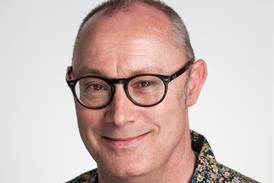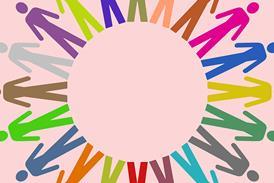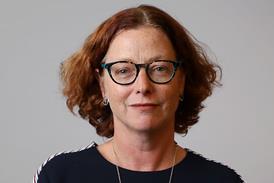Elaine Wilson and Johannes Dalhuijsen shed light on the Sunderland Recovery at Home service that provides urgent and intermediate care for patients who are housebound and cannot visit their GP or other healthcare services

Dr Johannes Dalhuijsen and Natalie Johnson, nurse practitioner with one of the Recovery at Home vehicles which go out to patients’ homes.
 Elaine Wilson
Elaine Wilson
Sunderland GP Alliance provides GP input to the Sunderland recovery at Home Service available for all suitable patients registered with a Sunderland GP. The aim of RaH is to provide urgent and intermediate care for patients who are housebound and cannot visit their GP or other healthcare services.
The service brings together a range of professionals for short-term healthcare and social support. It is available 24/7, all days of the year.
GPs can find it very challenging to visit unwell, housebound patients urgently and then find the time to arrange suitable diagnostic, treatment and support options. Very frail patients do not do well in hospital and it is often safer and better to provide care at home for them in a familiar environment closer to their families.
These patients often find hospital stressful and confusing and they are at a higher risk of falling or contracting a serious infection if admitted, too.
Recovery at Home can provide complex care at home, preventing admission, although it does not completely replace hospital services. Having a recovery at home option also means that we can promote early discharge from hospital and put in place a package of services to support the patient. Services might include physiotherapy /occupational therapy, intravenous medication, home care or respite services.
Recovery at home – what can it offer?

Dr Johannes Dalhuijsen
For urgent problems, highly skilled nurses establish a diagnosis and come up with a treatment plan. This includes blood pressure checks, oxygen saturations, blood sugar tests and lab tests for urgent problems when needed.
When patients need extra support because they are unwell, RaH can arrange physiotherapy or extra home care. In COPD exacerbations, for instance, RaH checks inhaler technique, dispenses medicines and sets up a nebuliser when needed.
It can offer breathing exercises via a physiotherapist and they can use their pulmonary rehab service. The aim is to reduce symptoms, enhance recovery, minimise recurrent infections and keep patients out of hospital.
Recovery at home can also organise intravenous treatments, like antibiotics for a cellulitis not responding to oral treatment or a severe otitis media. There are exceptions.
A head injury, for example, on someone on anticoagulants would always need to be seen in hospital. Chronic health problems, long-term treatments and palliative cancer care are also unsuitable.
If someone is well enough to get to the pub, hairdresser or corner shop they don’t need Recovery at Home – they should call their GP or make an appointment with extended access.
The GP function increases the clinical capacity and supports GP triages as well as the nursing staff. This helps to keep the service seamless and safe.
The service is expanding and becoming more integrated. This is a huge improvement for patients and GPs to be able to keep very frail, unwell people at home in a familiar environment.
Patients can access this service via their GP practice, which triages and then refers via the central RaH number. District nurses, carers and ambulance staff can contact Recovery at Home on behalf of the patient.
Recovery at Home – effectiveness
Our RaH service is funded by a mix of local authority and healthcare funding. It provides a high quality, comprehensive, personalised and safe service for frail, often elderly patients who don’t do well outside of their homes.
This service is certainly effective at reducing time spent in hospital. A high frequency/high intensity intervention, this service can make a difference to people struggling with complex health issues. RaH reduces pressure on GPs to send patients to hospital by default and helps to reduce GP workload for urgent visits.
RaH is a 24/7 service with around 100 visits per day and over 200 calls. Some of these patients have been in and out of hospital many times.
Recovery at Home – the future
Recovery at Home is well integrated across services, giving easy access for patients in need and reducing unnecessary admissions into hospital. It has become an innovative, significant, state of the art facility.
The capacity of the work is increasing to meet demand. The service needs to work continuously on streamlining pathways, making procedures as efficient as possible.
An obvious direction for development is to include new technology. For instance, digital pathways, telecare, artificial intelligence and near patient testing.
A pilot is underway, which enables healthcare professionals to monitor, guide patients via internet, as well as links patients to other digital health apps and local resources.
There may also be opportunities to link recovery at home with other, more preventive, resilience supporting initiatives, as well as with our new PCN social prescribing service (well-being link workers) which will be coming on stream in 2020.
Elaine Wilson is communications lead, Sunderland GP Alliance and Johannes Dalhuijsen is a GP.



























No comments yet